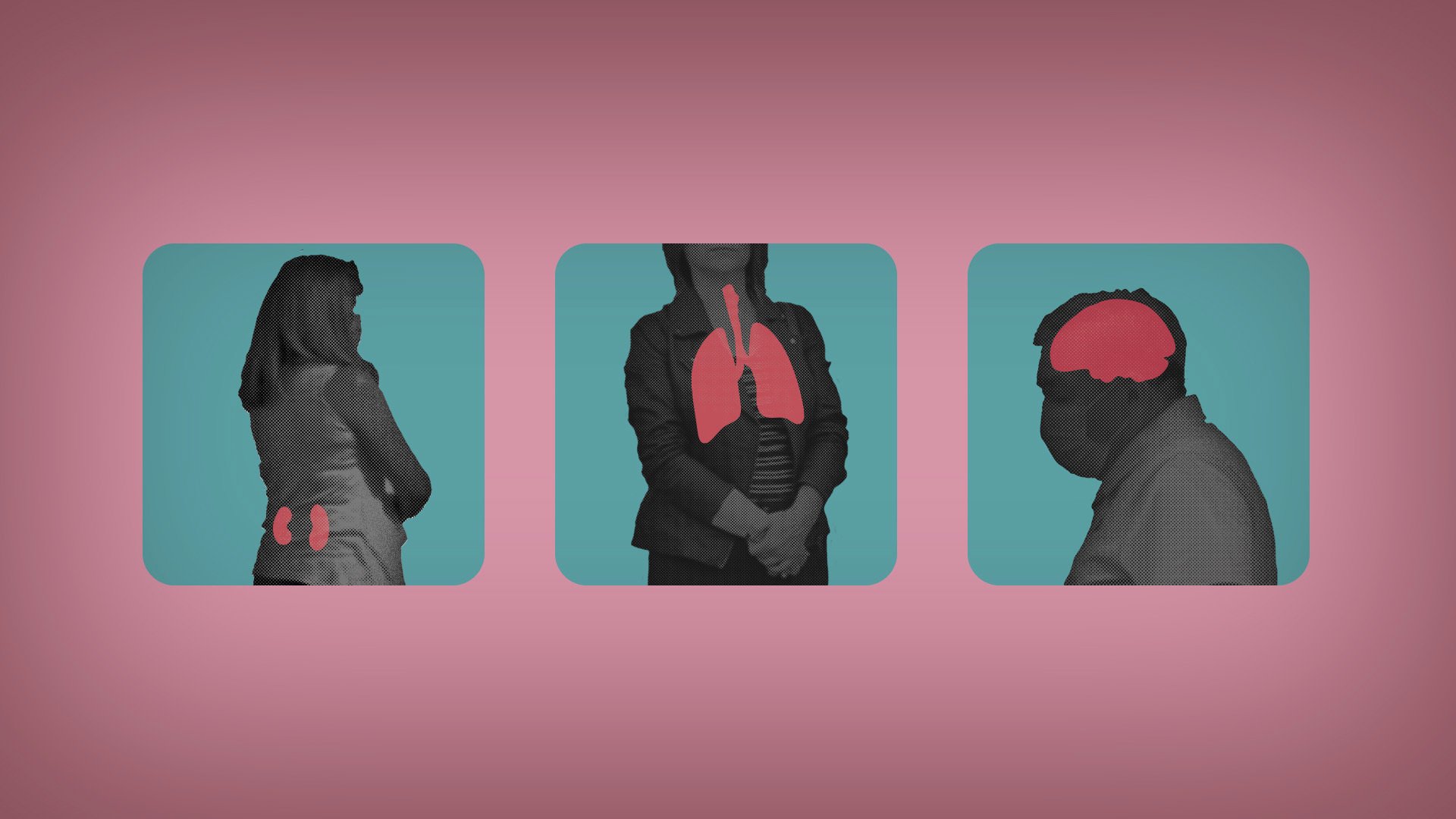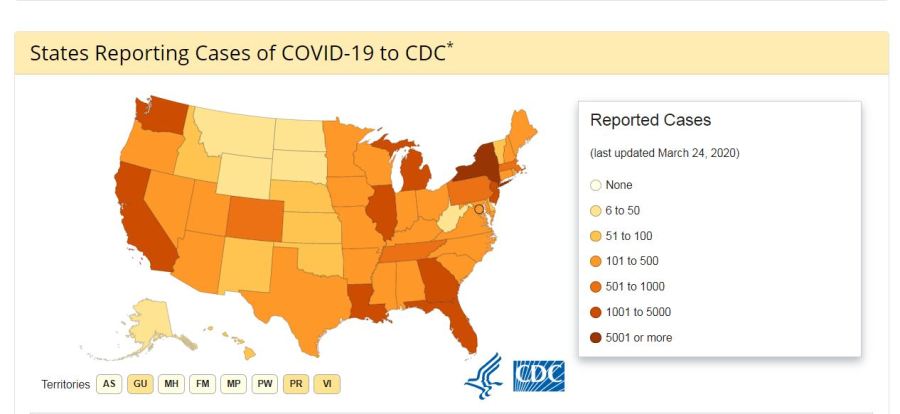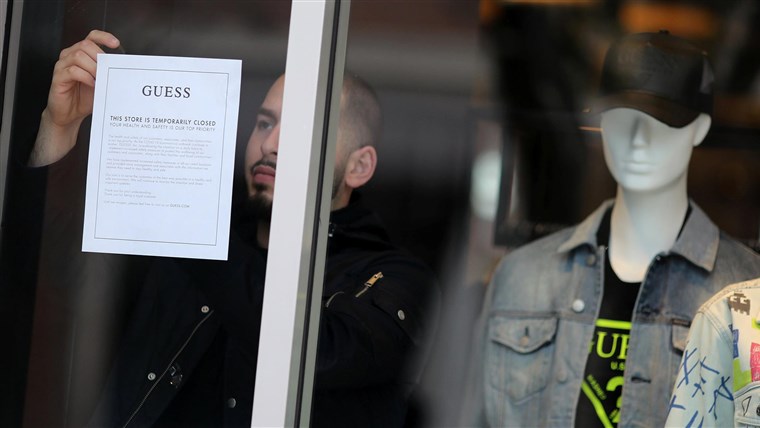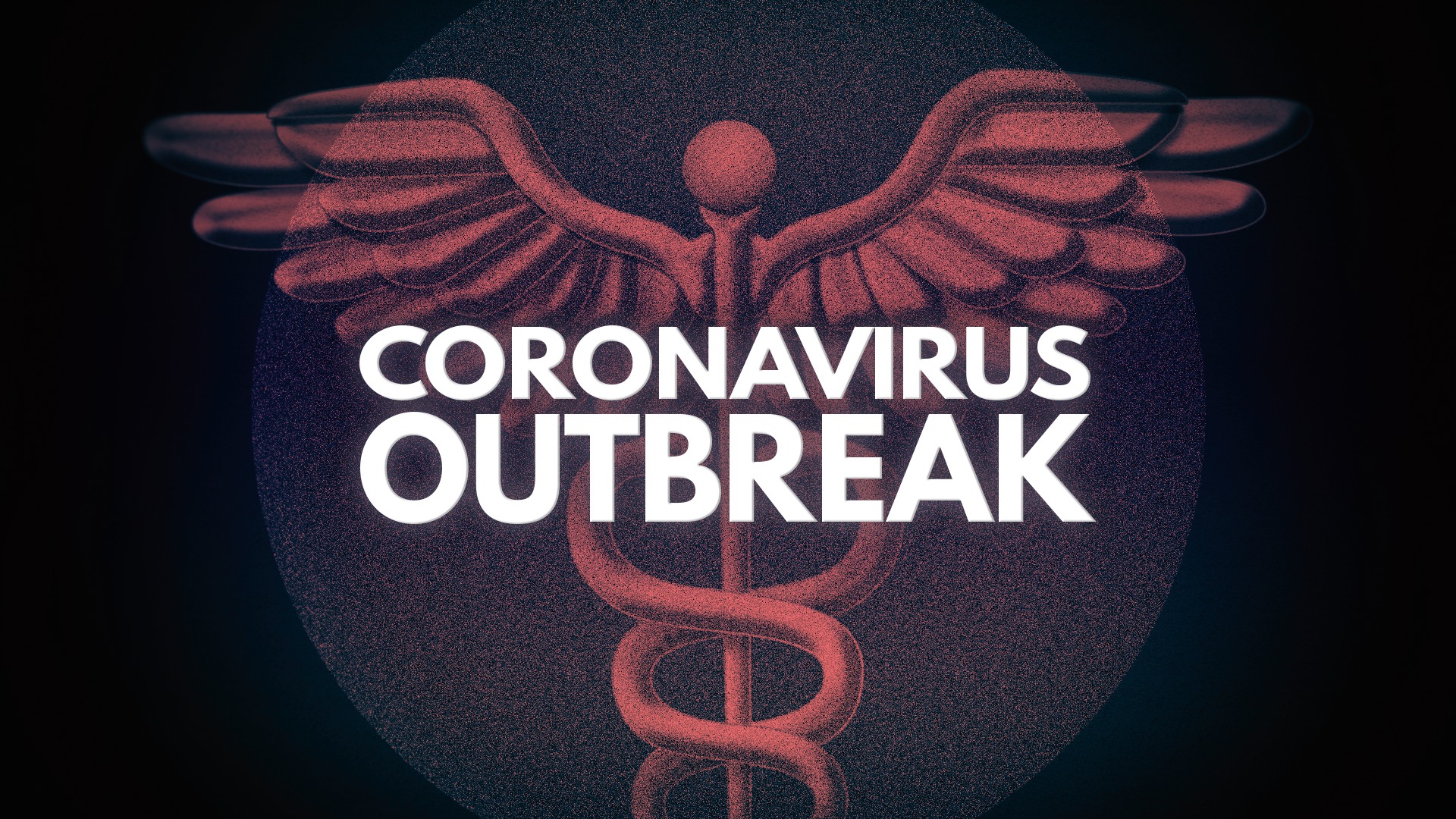
Coronavirus cases continue to surge in much of the United States, where the number of confirmed infections has topped 4.6 million, with nearly 155,000 reported deaths. Florida has surpassed New York to become the state with the second-highest number of infections after California. Almost 66,000 new COVID-19 cases and more than 1,400 deaths from the virus were reported in the U.S. on July 29th, 2020. The toll marks the highest number of deaths from COVID-19 in a single day since May 15. A total of 773 of those deaths were reported by coronavirus hot-spot states Arizona, California, Florida and Texas. Florida reported a state record of 216 coronavirus-related deaths in 24 hours.
In California, healthcare providers say they are again dealing with shortages in testing, which is hitting low-income and immigrant communities the hardest. In Texas, doctors at a rural hospital in Starr County have received critical care guidelines to help them decide which COVID-19 patients the hospital can treat and those whom they send home because they are more likely to die. With the virus continuing to spread out of control, researchers at Johns Hopkins University are calling for a “reset” in the U.S. coronavirus response with universal mask mandates, federal support for expanded testing and a new round of stay-at-home orders in hot spots. And in an open letter published Wednesday, the Association of American Medical Colleges writes, “If the nation does not change its course — and soon — deaths in the United States could be well into the multiple hundreds of thousands.”
Globally, coronavirus cases have now topped 16.2 million and over 650,000 have died since the first cluster of cases were reported in late December 2019 in Wuhan China. Last week, the worldwide caseload jumped by 1 million in just four days. The World Health Organization declared the outbreak the most severe global health emergency the WHO has ever faced.
As European nations scramble to prevent a second wave of infections, Britain has reinstated a 14-day quarantine for travelers coming from Spain. Globally, 11 million people have recovered. For those who survive COVID-19, there’s increasing evidence of long-term organ damage with more studies underway. A new study published by the Journal of the American Medical Association found that of 100 middle-aged patients who recovered from COVID-19, 78 had structural damage to their hearts.
One study group in Italy found that 87% of patients hospitalized for acute COVID-19 were still struggling 2 months later. Data from the COVID Symptom Study, which uses an app into which millions of people in the United States, United Kingdom, and Sweden have entered their symptoms, suggest 10% to 15% of people—including some “mild” cases—don’t quickly recover. But with the crisis just months old, no one knows how far into the future symptoms will endure, and whether COVID-19 will prompt the onset of chronic diseases.
Distinct features of the virus, including its propensity to cause widespread inflammation and blood clotting, could play a role in the assortment of concerns now surfacing. Survivor studies are just starting to probe them. Researchers across the United Kingdom have launched a study that will follow 10,000 survivors for 1 year to start, and up to 25 years. Ultimately, researchers hope to understand the disease’s long shadow and hopefully be able to predict who’s at highest risk of lingering symptoms and learn whether treatments in the acute phase of illness can head them off.
Read more

There have been over 15 million confirmed coronavirus cases around the world with 618,000 deaths. Of those cases 8,500,000 have recovered. In the US there are over 4 million confirmed cases and over 145,000 have died in the 6 months since the first case was confirmed in the US. Almost 8,500,000 of the US cases have recovered. The United States has set another grim record for coronavirus infections, with more than 75,600 new cases confirmed. At least 11 states are reporting record hospitalizations, with nearly 1,000 new deaths in just 24 hours. Officials in Texas and Arizona have put out calls for refrigerated trucks, as morgues overflow with the bodies of COVID-19 patients. Texas and Florida both reported their highest death tolls of the pandemic.
As the number of new global coronavirus cases reaches record highs, the World Health Organization is warning the coronavirus outbreak will continue to worsen if governments don’t take basic public health measures. Reports the number of coronavirus deaths in Latin America has now exceeded the death toll in the United States and Canada. Researchers estimate the US will have 219,864 total Covid-19 deaths by November 1, according to the Institute for Health Metrics at the University of Washington.
In Florida, confirmed coronavirus cases topped 300,000 even as Disney World completed a phased reopening of its Orlando theme parks. Nearly 50 Florida hospitals said they were out of ICU beds. In Miami, hospitals have run out of regular intensive care beds, with new patients moved into converted ICUs. Governor Ron DeSantis said he was mobilizing 1,000 medical workers to fill critical staffing shortages.
California, the most populous state and the first to shut down months ago, appeared to have Covid-19 under control — only to suffer a massive resurgence and surpass New York with the most coronavirus cases in the nation. California, which now has 417,000 confirmed cases due to the recent spikes, is largely shutting down again. California Governor Gavin Newsom has a plan to halt the recent surge by ordering all indoor restaurants, wineries, movie theaters and museums to be closed again. Bars have been ordered to cease all operations. Indoor businesses have been shuttered in many areas. Newsom said the new shutdowns are needed to address the public health crisis. The Los Angeles and San Diego school districts have announced that all classes will be conducted online at the start of the school year due to the pandemic.
Covid-19 is set to become one of the leading causes of death in Los Angeles County, according to Barbara Ferrer, the county’s health director. “It’s killing more people than Alzheimer’s disease, other kinds of heart disease, stroke and COPD,” Ferrer said. Comparing Covid-19 to the flu, Ferrer said data shows Covid-19 killed twice as many people in six months as the flu did in eight months.
The city of Atlanta announced a similar plan. In New York, Governor Andrew Cuomo said schools will be allowed to reopen, but only in regions with low daily infection rates. At least 41 states have some kind of mask requirement in place or planned. In Colorado, Governor Jared Polis issued a statewide mask mandate, a week after refusing public health officials’ pleas to require facial coverings in public. Arkansas Republican Governor Asa Hutchinson issued a similar mask mandate. The CDC reports that 10 states have reported 10,000 new cases while three states each reported over 60,000 new cases in the last week.
Several vaccine trials are progressing well, and researchers say a vaccine might be publicly available by early 2021. Health and Human Services Secretary Alex Azar said any Covid-19 vaccine that’s sponsored by the US government will be free or affordable for the American public.
Read more

The World Health Organization is warning “the worst is yet to come” as countries across the globe are experiencing new spikes, with some putting the brakes on reopening. The pandemic is the worst in the Americas, where the number of COVID-19 deaths are projected to nearly triple to 627,000 by October 1. Coronavirus cases have now surpassed 11 million worldwide, with over a half-million deaths. Cases continue to surge across much of the United States, where confirmed cases have now topped 2.8 million, with over 128,000 reported deaths — that’s one-quarter of the world’s cases and deaths, though the U.S. has just over 4% of the global population.
Spikes are being reported in 36 states. Only two states — Connecticut and Rhode Island — saw a decline in new cases compared to the previous week. The United States has set another grim coronavirus record, confirming nearly 52,000 cases of COVID-19 in just 24 hours. Alaska, Arizona, California, Georgia, Idaho, Oklahoma, South Carolina, Tennessee and Texas all reported single-day record levels of the disease with hospitals in some regions already overwhelmed with patients.
At least a dozen states have “paused” their reopening. In California, Governor Gavin Newsom ordered bars in seven counties, including Los Angeles, to close. The governors of Florida and Texas have ordered bars to close, among other restrictions, in an attempt to curb the surge in cases. A major hospital system in Houston reportedly stopped disclosing COVID-19 data after its ICU capacity hit 100%, and following conversations with Governor Greg Abbott in which he expressed concern over negative headlines. Both governors are refusing to impose statewide stay-at-home orders and mandate the wearing of face masks.
More states around the country are imposing new measures and rolling back their reopening as coronavirus cases continue to surge. The governors of Oregon and Kansas are mandating face masks for residents. Jacksonville, Florida, also said it will make face coverings mandatory. Seven cities in Texas say they will impose orders mandating face masks. Meanwhile, hospitals in Texas report a dire situation as cases surge.
Meanwhile, beaches in Los Angeles, as well as several Florida counties, were closed for Fourth of July weekend. Despite skyrocketing cases, crowds still packed many of the open beaches in coastal cities for the Fourth of July holiday weekend, sparking further fears of new spikes.
Officials in Texas, Florida and Arizona say the states’ early reopenings helped fuel the explosion in cases. In California, Governor Gavin Newsom reimposed coronavirus restrictions, shutting down bars and indoor dining in 19 counties that are home to more than 70% of California’s population. In Arizona, Governor Doug Ducey ordered bars, gyms, movie theaters and water parks closed for at least 30 days amid an exponential rise in new infections. New York City has also halted plans to reopen indoor dining at restaurants. New York, New Jersey and Connecticut have ordered travelers from 16 states with high infection rates to self-quarantine upon their arrival.
Read more

The coronavirus pandemic continues in almost every corner of the globe, with the number of confirmed COVID-19 cases worldwide surpassing 1 million people — though the true number is certain to be far higher due to a critical lack of testing globally. The largest number of cases is in the United States with over 350,000 confirmed. Over 10,000 people in the US have died of Covid-19 as the virus continues to spread.
In Europe, COVID-19 has pushed hospitals across the continent past their breaking points. Spain has reported over 120,000 cases and their death toll topped 10,000. In the U.K., London’s ExCeL convention center has been converted into an enormous field hospital with plans to treat up to 4,000 COVID-19 patients. Over 2,300 people have died from the disease across the U.K.
In Italy, there are over 100,000 confirmed cases and their COVID-19 deaths have topped 15,000. It’s been reported that Italy’s true toll is far higher because the country can’t spare the resources to test every dead body. U.S. Vice President Mike Pence said models predict the United States faces a trajectory of COVID-19 deaths similar to Italy’s. The computer model used by the White House projects close to 82,000 COVID-19 deaths in the United States by August 4, assuming the country implements full social distancing until the end of May.
The 81,766-death projection is a slightly less grim figure than the 93,531 cited earlier by the administration. The model projects that the country may need fewer hospital beds, ventilators and other equipment than previously estimated, and that some states may reach their peak of COVID-19 deaths sooner than expected. Not all states are using the federal government’s forecasting model.
While the White House projects that coronavirus cases in the nation’s capital would peak later this month, the local Washington, DC government is relying on a different computer model that says it won’t peak until late June or early July. Health experts warn against early optimism and say it’s best to prepare for worst case scenarios.
Experts say that pandemic modelling is almost never precise and the Covid-19 pandemic, the uncertainty in the projections is because of lack of access to good data coupled with the fact that we just don’t know enough about the coronavirus. Another factor that adds to the uncertainty is how people will behave and what kinds of policies will be enacted to change contact patterns in the weeks and months ahead. The ranges estimated really depends on how much people actually adhere to social distancing policies and how quickly these policies are issued.
Read more

As concerns about the coronavirus rippled across the globe, the US president declared the Covid-19 outbreak a national emergency as public life in America continues to grind to a halt. Schools have closed to millions of students, creating anxiety for working parents across the country. Travel bans have been widened and some cities across America have issued curfews or “shelter in place” orders to slow the spread of the virus. More “shelter in place” orders are expected as the number of confirmed cases continues to rise and has now been found in all 50 states.
Shelter in place orders will come from local government rather than federal. A growing number of countries have also imposed lockdowns that effectively shut down public life, but the details of such lockdowns vary dramatically. Italy banned all public gatherings and set a 6 p.m. curfew but allowed travel for work or health reasons, while in China, millions of residents are restricted from even going to shop for groceries.
The “shelter-in-place” order that San Francisco adopted has fairly large exemptions for health, work, food and even exercise. City officials ordered residents to remain in place at their homes except for essential activities, essential business, and essential government functions, including tasks essential to maintain health and safety, such as obtaining medicine or seeing a doctor or getting necessary services or supplies for themselves or their family or household members, such as getting food and supplies, pet food and supplies necessary for staying at home.
The order also includes:
- Engaging in outdoor activity, such as walking, hiking or running provided that they maintain at least 6 feet of social distancing.
- Caring for a family member in another household.
- Caring for elderly, minors, dependents, people with disabilities or other vulnerable persons.
Treasury Secretary Steven Mnuchin outlined a variety of potential proposals to Senate Republicans as part of a legislative package to help Americans and industries that are reeling from the coronavirus. The administration proposed an initial $250 billion could be sent to Americans as early as the end of April if it can muster congressional approval.
Sen. John Thune noted that getting cash assistance to Americans is something that has historically taken some time, but “I think there are ways now electronically that you can process things more quickly.” The proposal has fairly widespread support from Senate Republicans, who say it will offer immediate assistance to Americans impacted by the virus. Some lawmakers have varying ideas about how the proposal should work, including who should receive the payments and how much each American should get.
Read more

The World Health Organization is warning the number of cases of COVID-19 caused by coronavirus is approaching 100,000 worldwide, with more than 3,100 deaths due to the illness. Most of the deaths and infections have occurred in China, where health officials reported 139 new cases and 31 new deaths recently.
South Korea confirmed 438 new cases, making their total number of confirmed cases over 5,700. Italy has over 3,000 confirmed cases and more than 100 deaths have been reported. Officials have closed down schools in Italy, South Korea, Japan, France, Pakistan, Iran and elsewhere, with nearly 300 million children kept home from school worldwide.
In the United States, there are now more than 300 confirmed cases and the death toll has reached 11 — with 10 of the deaths occurring in Washington state. California recorded its first coronavirus death: an elderly man who traveled on a Princess cruise ship that departed from San Francisco and traveled to Mexico in February. Governor Gavin Newsom has ordered the ship quarantined off the coast of California and is airlifting tests for passengers and crew. Governor Newsom made the announcement as he formally declared a state of emergency across California.
The CDC issued new guidance for clinicians on screening patients for novel coronavirus and assessing their risk for infection. The agency also started shipping its coronavirus assay to labs across the U.S. and in other countries. According to the US Centers for Disease Control and Prevention, 13 states in the US have reported confirmed or presumptive positive cases of COVID-19. Washington State has the highest number of cases with 70 confirmed illnesses and 10 associated deaths. California has 60 positive cases and 1 death.
Of the confirmed cases in California, 42 of them are linked to repatriation or international travel. Cases are rising rapidly in New York, where there are 22 confirmed cases across the state with an additional 24 testing results pending, and 122 individuals under investigation. In response to the rise in cases, the US Senate passed an $8.3 billion bill to fight the outbreak. This came just a day after the bill was approved by the House of Representatives. More than $3 billion is expected to be put into research and development of treatments, vaccines, and testing.
Read more

The deadly coronavirus that originated in Wuhan, China less than a month ago, has spread to 13 other countries. It has spread to Australia, Cambodia, Canada, France, Japan, Malaysia, Nepal, Singapore, South Korea, Taiwan, Thailand, the US, and Vietnam. The US now has five confirmed cases of a deadly coronavirus that originated in Wuhan, China, less than a month ago. The confirmed cases in the US are in Washington, Illinois, California and Arizona. Four of the US patients had recently traveled to Wuhan and one was a Wuhan resident traveling through California.
The outbreak has killed 81 people and infected more than 2,800 in mainland China. Authorities have sealed off the city of Wudan, the epicenter of the outbreak. All of Wuhan’s public transportation — including buses, ferries, and trains have been shut down. Trains and airplanes coming in and out of the city were halted and roadblocks were installed to keep taxis and private cars from exiting the city.
The World Health Organization called the lockdown of the city of 11 million people unprecedented. In an effort to contain the outbreak, two smaller Chinese cities, Huanggang and Ezhou, travel restrictions were also imposed. Authorities then expanded the number of cities on lockdown to 10. The lockdown is affecting some 33 million people, as medical workers struggle to slow the spread of a novel strain of coronavirus.
The coronavirus family is a large group of viruses that typically affect the respiratory tract. Coronaviruses can lead to illnesses such as the common cold, pneumonia, and severe acute respiratory syndrome (SARS), which resulted in 8,000 cases and 774 deaths in China from November 2002 to July 2003. Patients with the new coronavirus — known as 2019-nCoV — have reported symptoms like fever, coughing, and difficulty breathing. Those who have died were elderly or otherwise unwell, according to Chinese officials. No deaths have been reported outside China.
Initially, authorities suspected that the coronavirus — which likely originated at a wholesale seafood market — could spread to humans only from animals but it was later determined that humans could transmit the virus to one another. The CDC recommends avoiding all nonessential travel to China’s Hubei province, where Wuhan is. They also recommend that people traveling to China avoid contact with sick people, particularly those with cold symptoms like coughs or runny noses. Travelers are advised to wash their hands frequently with soap and water and scrub for at least 20 seconds. They should refrain from touching their eyes, nose, or mouth with unwashed hands. Elderly travelers and anyone with preexisting health conditions should consult a doctor before traveling to China.
The CDC said the risk in the United States is still low but they are advising precautions and monitoring the situations. All of the US patients who have tested positive for the virus have been isolated and are recovering. The CDC said 32 people who had contact with the US cases have tested negative for the virus and the agency plans to test more people in the coming days.
Read more









